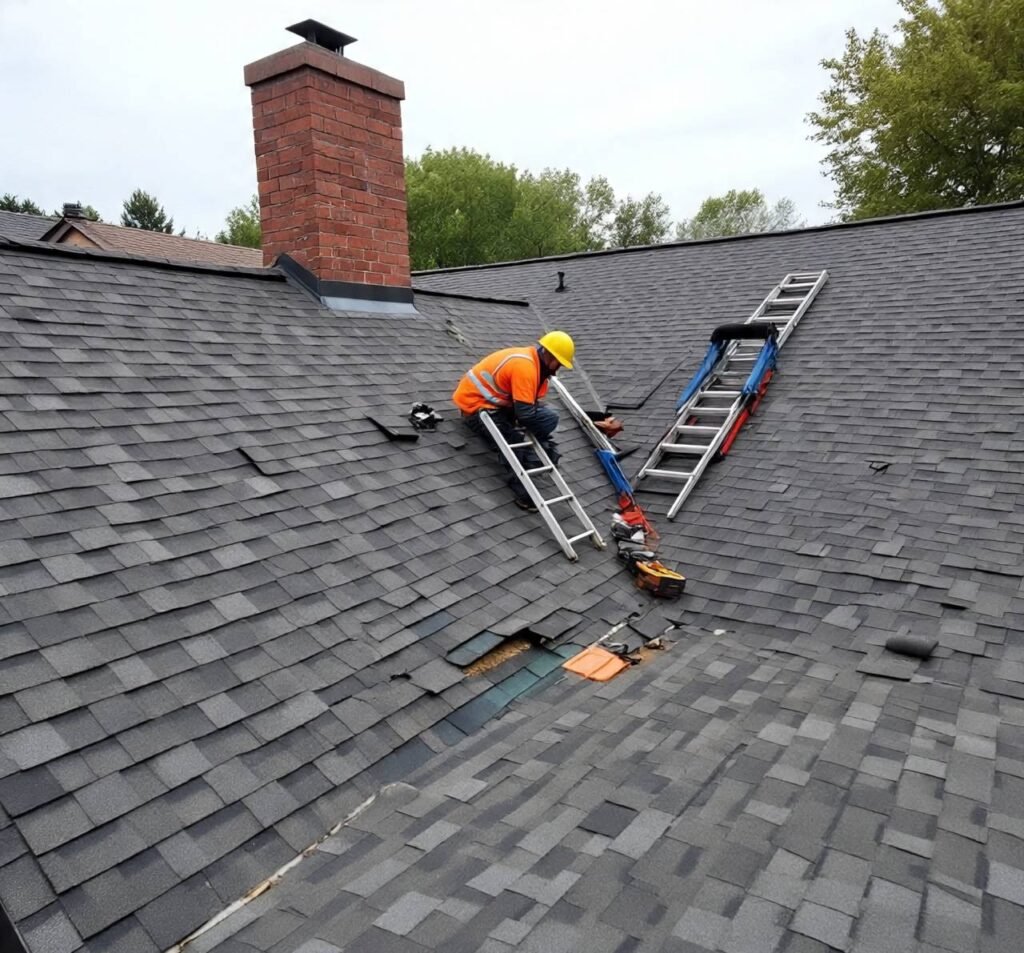Table of Contents
- Why Roof Maintenance Matters
- Recognizing Signs of Roof Damage
- Effective Steps for Early Roof Repair
- How Weather Affects Your Roof
- Preventive Maintenance Tips
- When to Seek Professional Help
- Future Trends in Roof Care
Why Roof Maintenance Matters
Maintaining a roof is crucial for a home’s safety, structural integrity, and overall well-being. It protects against elements like rain, snow, wind, and extreme temperatures. If compromised, water infiltration can damage wooden beams, insulation, ceilings, walls, and electrical systems, leading to costly repairs. Persistent leaks can cause rot, weaken structural support, lead to mold growth, and attract pest infestations, posing significant health risks. Immediate action after storms, high winds, or accidents is essential to prevent issues from escalating into major disasters. Proactive maintenance, including routine inspections, is vital to preserving a home’s value and avoiding unexpected expenses.
For those experiencing unexpected damage, especially after severe weather events, scheduling an emergency roof repair St Louis MO is a critical step toward minimizing further harm. A fast and professional response can prevent moisture from spreading, stabilize compromised areas, and give homeowners peace of mind during stressful situations. In regions like St. Louis, where unpredictable weather is common, having a trusted local roofing expert ensures you’re prepared for whatever the weather brings.
Recognizing Signs of Roof Damage
Early detection of roof damage is crucial for saving time and money. Look for stains on ceilings or walls, dark spots in the attic, damp insulation, missing or curled shingles, and granules in gutters. Rising energy bills resulting from a breached roof can increase heating and cooling expenses, straining HVAC systems. A well-sealed and insulated roof plays a significant role in energy efficiency. By addressing these cues promptly, homeowners can prevent further deterioration and avoid compounding repair costs. The Department of Energy emphasizes the importance of a well-sealed and insulated roof for energy efficiency.
Effective Steps for Early Roof Repair
- Inspect seasonally: In spring and fall, conduct a detailed visual scan from the ground, looking for sagging, damaged, or missing shingles.
- Check the attic after weather events: Wet insulation or water marks on rafters suggest a new leak, even before it appears on the ceiling indoors.
- Address minor shingle damage: Swiftly repair or replace compromised shingles to prevent exposure of the roof’s underlayment and support structures.
- Seal minor leaks: Invest in high-quality, flexible roof sealant designed for your specific roof material and climate.
- Maintain flashing: Secure loose flashing and use compatible sealants to reinforce these crucial seals around penetrations and edges.
Even if damage appears small, delays in repair can be costly. Routine self-checks, along with prompt responses to any changes, reduce the likelihood of developing larger problems—and big repair bills—down the line.
How Weather Affects Your Roof
Weather plays a significant role in roof issues, with high winds, hail, heavy snow, ice, and prolonged sunlight causing damage to shingles, seams, and flashing. These weather patterns not only present one-time threats but also make even new roofs vulnerable over time. To prevent damage, it is essential to inspect a home’s roof after severe weather, especially if there is immediate damage, to manage repair costs and maintain a home’s overall protection.
Preventive Maintenance Tips
To maintain a roof, clean surfaces and gutters of debris to promote water drainage and prevent rot. Trim back branches to reduce damage and increase sunlight, which helps dry moisture. Regularly check roof penetrations to ensure flashing is sealed and rust-free. Use roof-safe cleaning solutions to prevent algae growth. Don’t avoid products that could damage roofing materials or the environment. Request annual or biannual professional roof assessments to catch issues early. Consisting of maintenance, it extends life and prevents major repair bills and disruptions to daily life.
When to Seek Professional Help
There’s a difference between manageable home maintenance and situations that require professional expertise. While tasks like clearing debris are generally safe for most homeowners, addressing issues that involve heights, steep slopes, large-scale leaks, or structural problems should be left to the professionals. Professionals not only have safety gear and extensive training, but can also diagnose less apparent problems, such as hidden mold or damage to the underlayment.
Home safety must remain the top priority. When problems are identified beyond the superficial—such as sagging rooflines, widespread shingle loss, or leaks after repeated repairs—it’s best to involve an experienced roofer to prevent injuries and escalation.
Future Trends in Roof Care
Technology and material science are transforming ” maintenance and repair, offering cool roof coatings and reflective membranes to reduce heat absorption. Shingles now provide greater impact resistance, longer warranties, and integrated materials to repel algae and fungus. Drones for detailed roof inspections and smart sensors for moisture and temperature monitoring provide earlier warnings and more precise data, enabling homeowners to make smarter, cost-effective maintenance decisions. Staying informed and updated leads to longer-lasting roofs, better indoor air quality, and improved home value.

